Animal textile fibers
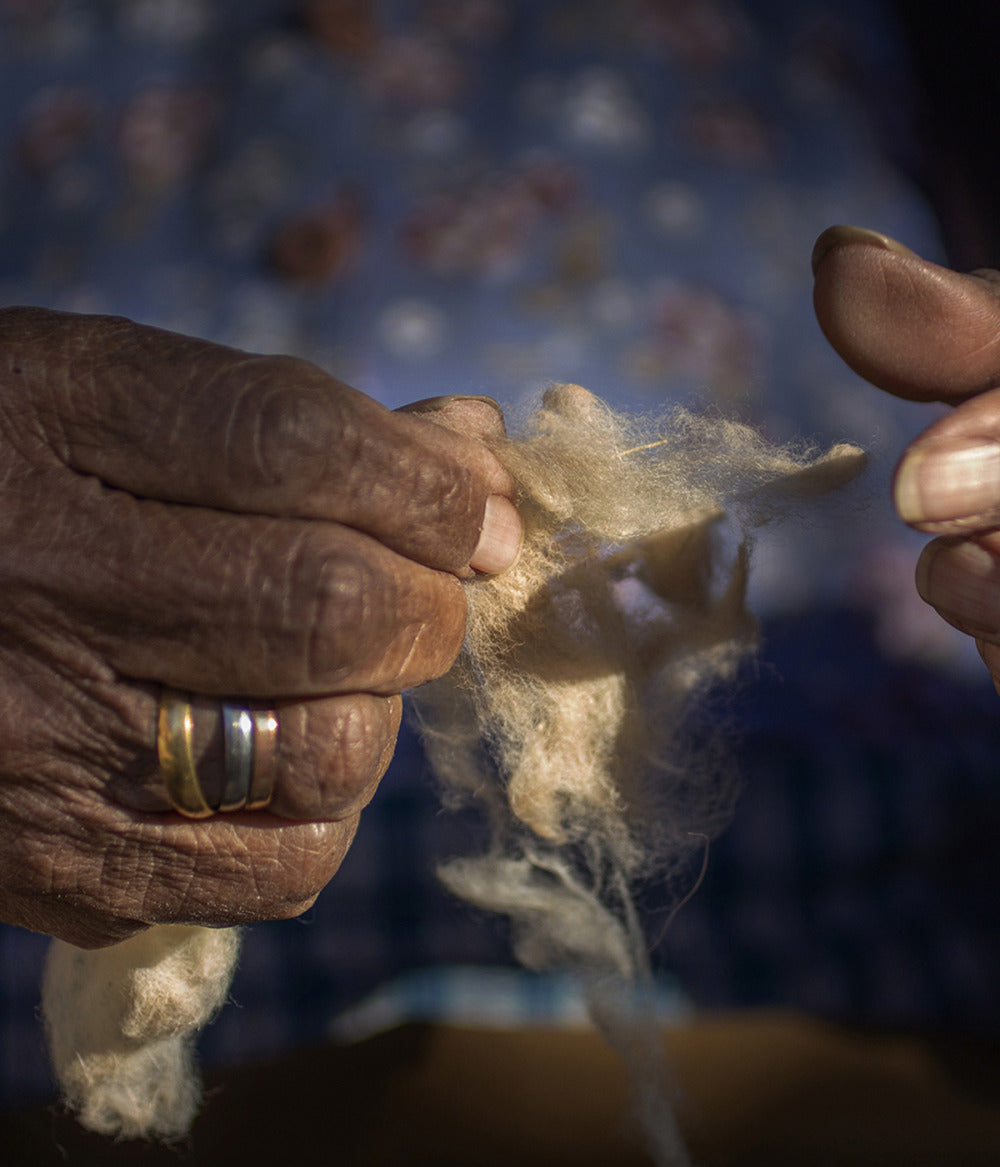
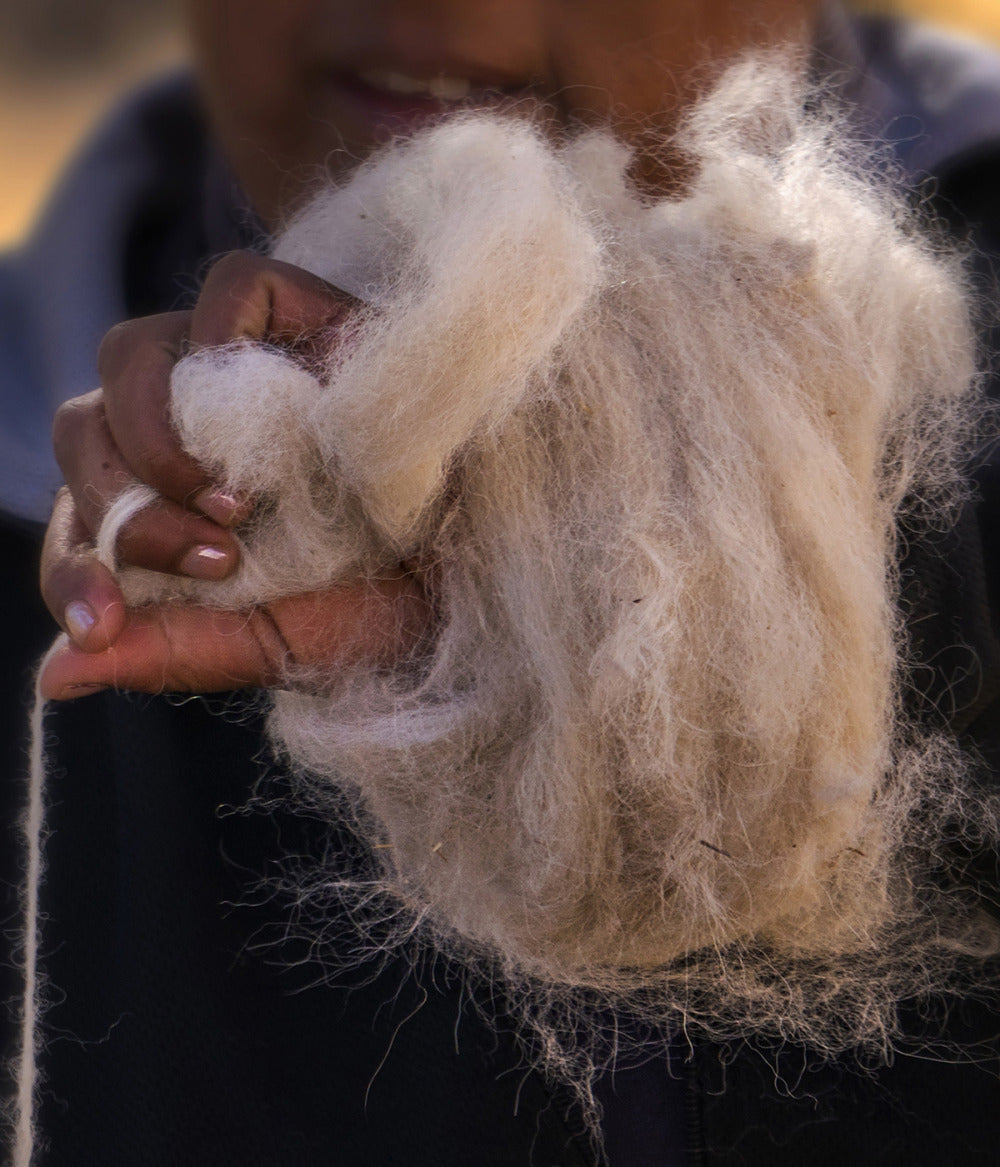
Sheep
The most well-known animal fibre with the longest tradition in the textile industry is wool, which is the hair of sheep. Its fibre is obtained through a process called shearing, which is carried out once a year. Freshly sheared wool is usually very dirty, so it is necessary to wash it to remove any organic residues attached to it. It is then dried on a flat surface or in the open air, and carding is carried out, which consists of stretching the fragments of the sheared wool, carefully separating the fibres by hand without cutting them. The next step is spinning, in which the fibres of the carded wool are twisted until a thread of the desired thickness is obtained. This wool thread is collected in a skein and washed again to remove any remaining residue. Finally, dyeing is carried out by cooking it with the plant product that will give it the colour, to which a mordant is added to achieve fixation.
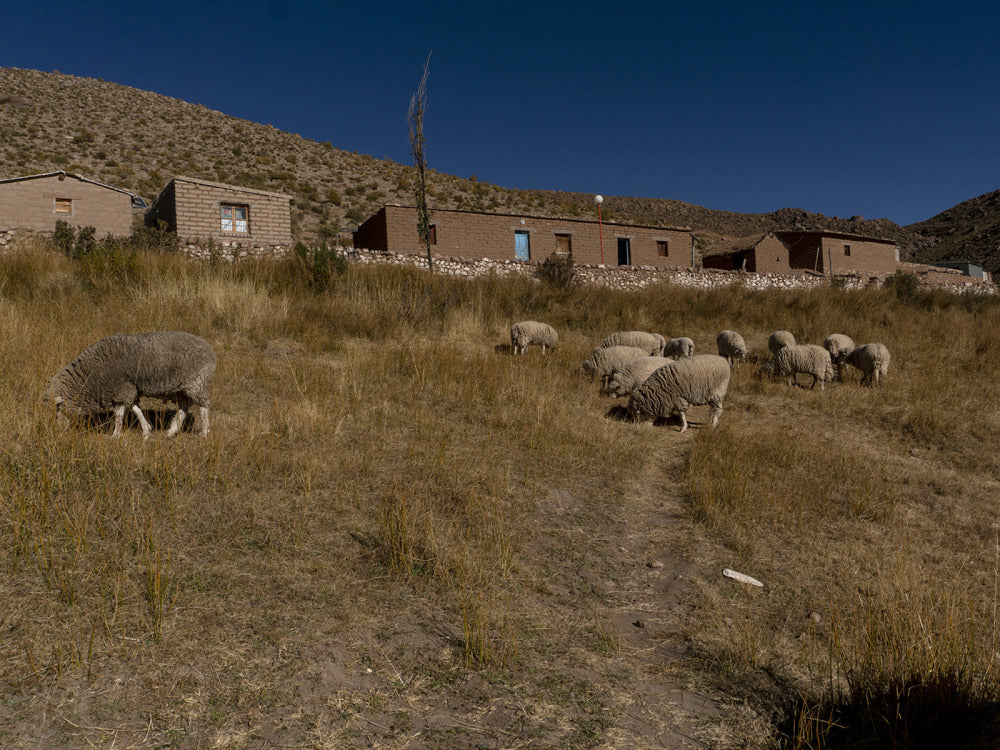
Exotic fibers. South American camelids.
In the majestic immensity of the Puna, at an altitude of over 3,500 m, communities have been guarding and raising their camelids in freedom for thousands of years. In a place with extreme environmental conditions, they represent a natural resource of the region and are a symbol of Andean culture.
Camelids are divided into domestic species (llamas and alpacas) and wild species (vicuñas and guanacos). While the former are suitable for livestock production, wild species belong to the fauna and their use is governed by strict conservation measures to prevent their extinction and preserve biodiversity.
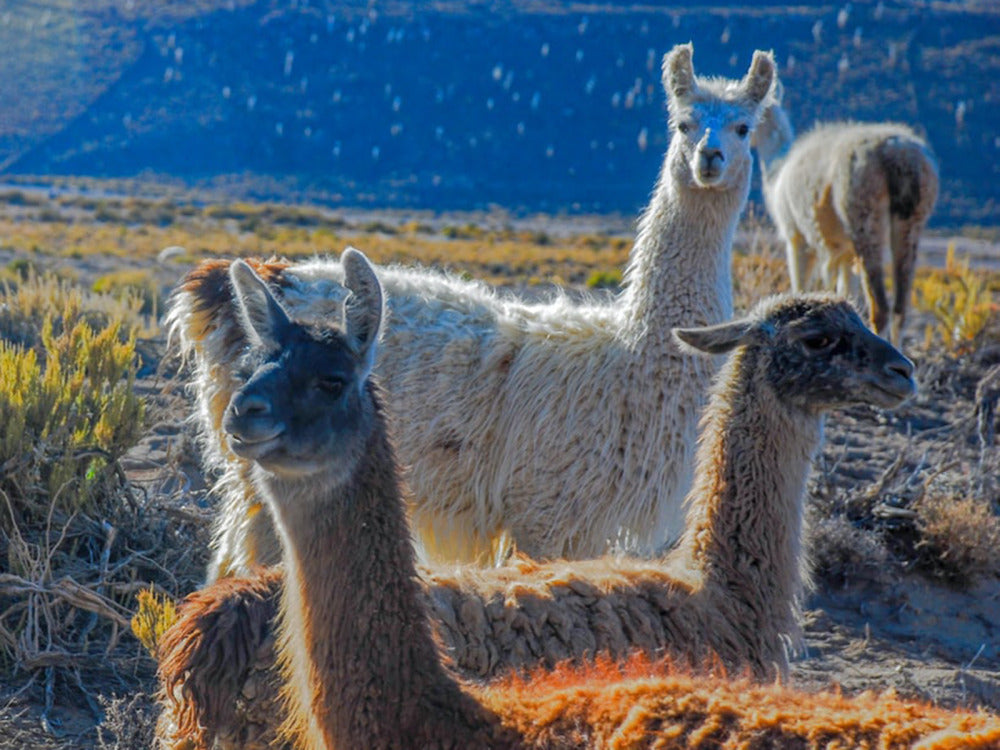
Calls
The llama (Lama glama glama) is an artiodactyl mammal, descended from the guanaco that was domesticated by the Inca Empire more than 6,000 years ago. They have been the most important animals for pre-Hispanic cultures in the Andes. They do not erode the soil or degrade the environment in which they live, and they develop their full potential in a place with extreme temperatures, thereby ensuring environmental sustainability like no other species in the region.
Its fiber is unique for its extraordinary softness and fineness. One of its great qualities is thermal insulation, since the fiber has a tubular, medullary structure, with microscopic air pockets that retain heat. This great insulating capacity makes it very comfortable, and adaptable to different temperatures, in addition to having a very slow absorption of humidity, and being an excellent barrier against the wind.
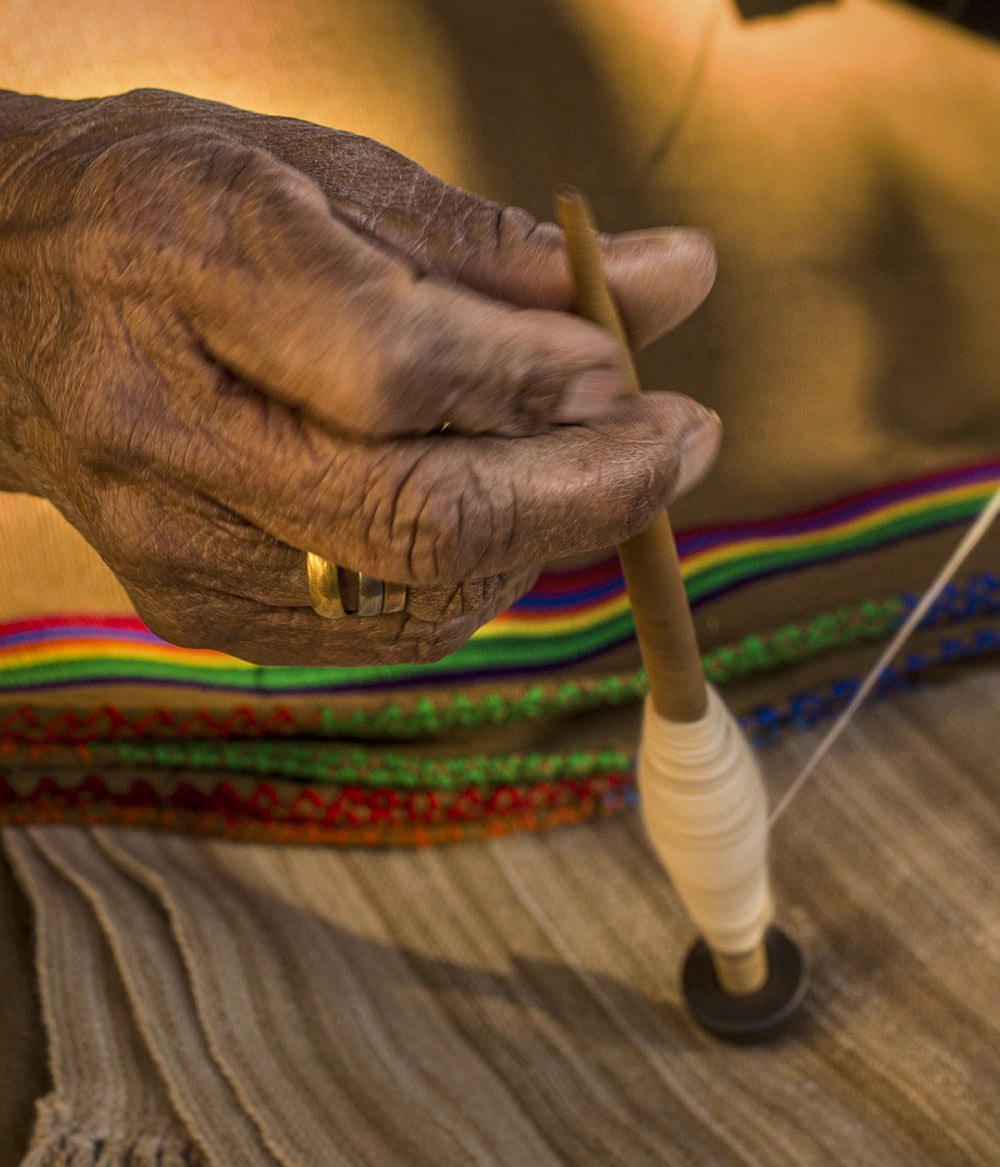
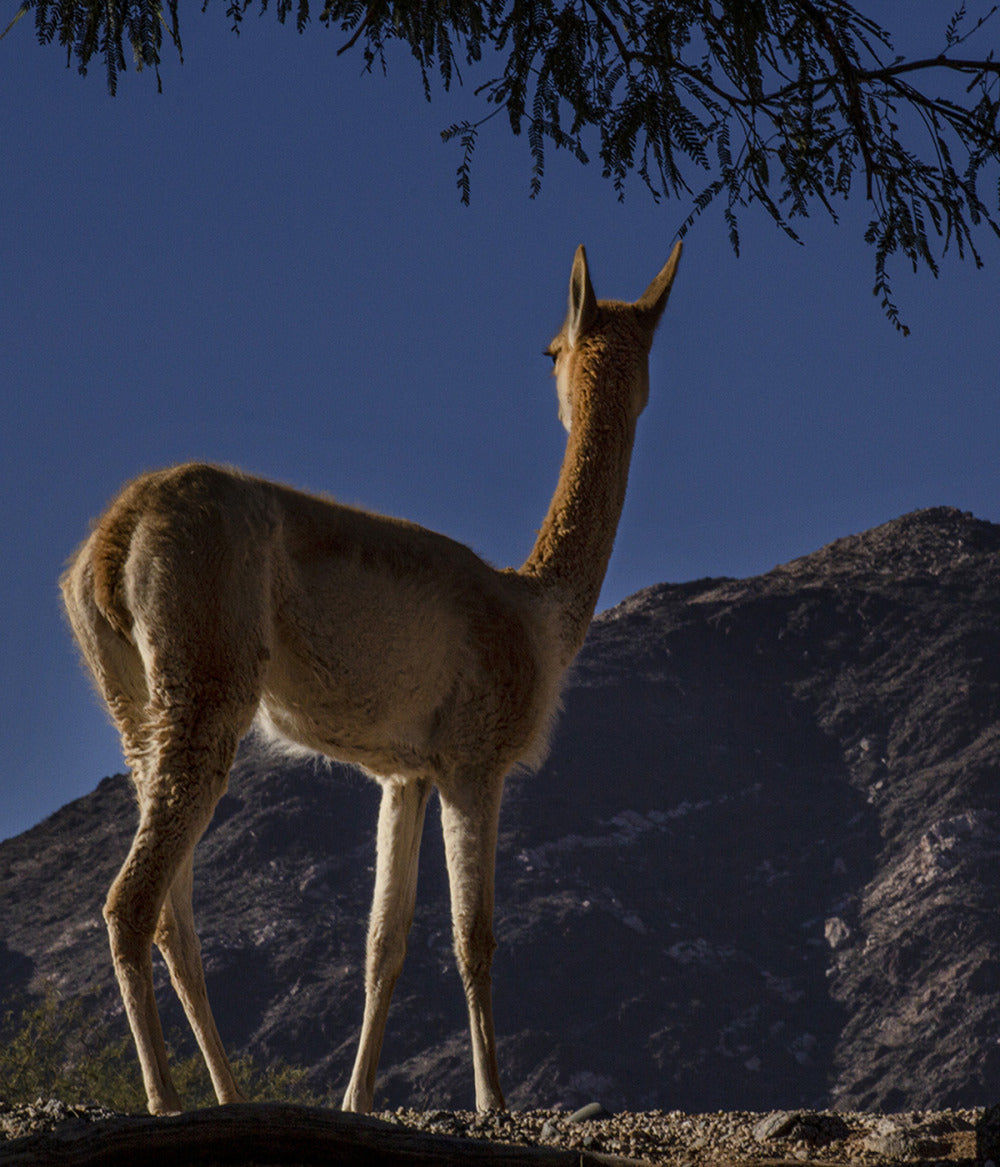
Vicuna
The Incas considered the vicuña to be a sacred animal. Herds of wild vicuñas belonged to the Sun God and were raised by a celestial shepherd called Coquena. And their fleece was worn as a distinction only by the Inca.
With the arrival of the Spanish in America and after hundreds of years of systematic slaughter to export its coveted hides to Europe, the species became endangered. Through the International Convention of 1969, strict conservation work was initiated, which ten years later, after recovery was achieved, included the possibility of using the species sustainably.
They are smaller, lighter and more agile animals than llamas, with a maximum weight of 45 kg. They are one of the most valued and appreciated textile treasures worldwide for their warmth and fineness. The fibers have scales that intertwine and isolate the air when spun, and measure between 12 and 14 microns in diameter. In addition to having excellent attributes, the small volume of fiber produced annually and the high costs involved in obtaining and transforming it, have made it a luxury fiber.
It is possible to make sustainable use of the vicuña, caring for and respecting the health and well-being of the animals, and facilitating their management with local communities so that they benefit. To this end, an ancient method of capturing and shearing wild vicuñas called Chaku has been revived, in which the entire community participates organized in different roles.

